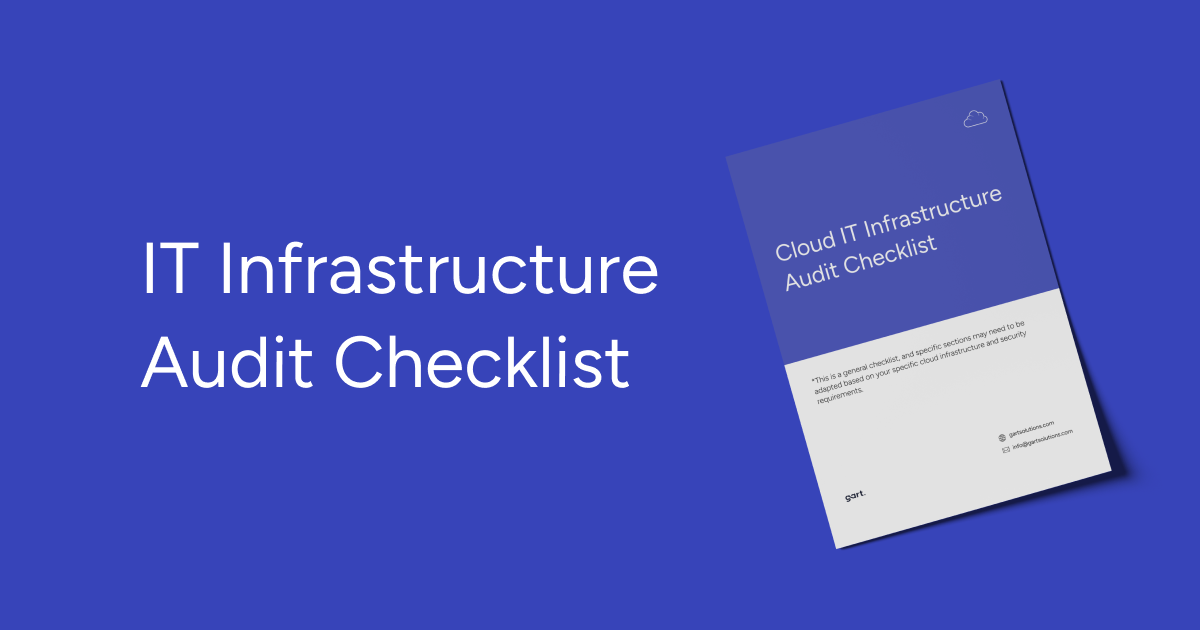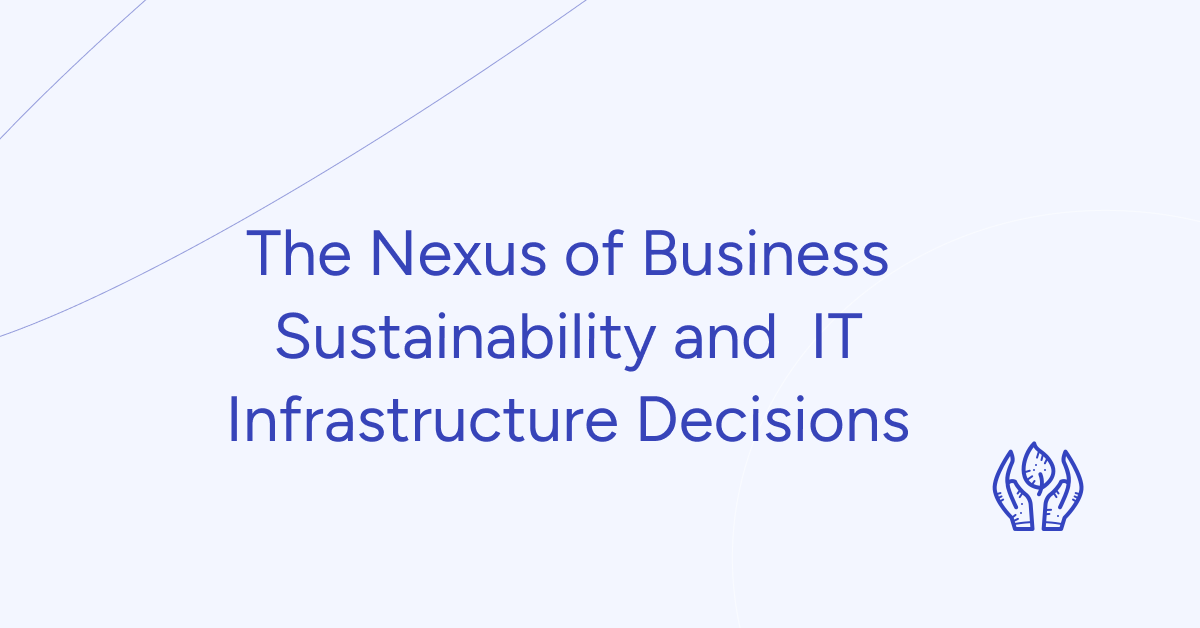
Last Update: 25.06.2025
Introduction
Since February 24th, 2022, we have been witnessing Russia’s attack on the sovereign democracy of Ukraine.
As a company rooted in Ukraine, we understand the risks and concerns regarding business continuity. Gart Solutions continues to stand strong and remain fully operational, delivering projects while keeping communication transparent with our team, clients, and other stakeholders.
In this piece, we’ll walk you through how we’re maintaining uninterrupted services worldwide despite wartime — including the proactive steps we’ve taken and our ongoing commitment to resilience.
Our Commitment to Clients During Wartime
At Gart Solutions, we made our teams distributed (80% of the team is outside Ukraine) and only 20% - staying in Kyiv).
So, in this way, we are 100% secure that our client projects stay on track, with the opportunity to be supported within different time zones (preferred by the client), no matter the circumstances.
Key Pillars of Business Continuity at Gart Solutions
Employee Relocation and Safety
Our top priority has always been the safety and well-being of our employees. From the start of the invasion, we acted quickly to relocate team members and their families to safer regions across Ukraine and Europe.
We continue to provide ongoing support for relocations as needed by:
Arranging safe housing and travel for employees and their families
Monitoring security risks to anticipate potential threats
Offering flexible work schedules to help employees balance work and family needs
Cloud-Based Infrastructure and Data Security
By relying on secure cloud environments hosted across the EU and U.S., we ensure that critical business operations continue without disruption (our operations are built on cloud-native infrastructure hosted in secure European and U.S. data centers (Microsoft Azure).
Our practices include:
Redundant backups and multi-region deployments
Compliance with international standards (ISO27001-aligned)
Role-based access control and zero-trust principles
Regular disaster recovery drills
Cybersecurity and Endpoint Security
Given increased cyber threats during wartime, we’ve implemented an enterprise-grade security framework that includes:
Multi-Factor Authentication (MFA) across all sensitive environments
Company-managed laptops with enforced disk encryption, antivirus/EDR, and centralized policy enforcement
Project-based VPN access where required (especially for sensitive data or infrastructure)
Security awareness training for all team members
Secure storage with granular access control and continuous backups
Autonomous Power and Internet Resilience (against Electricity Blackouts)
In case of high risk, the Ukrainian team has quick and safe access to the shelters, which are equipped with facilities and Internet.
We have organized resilient and autonomous power management systems to mitigate the impact of electricity cut-offs – our implemented solutions maintain uninterrupted operations (see the picture of some of our setups below):
EcoFlow portable power stations for essential devices to ensure autonomy during blackouts.
Picture 1: “Autonomous electricity supply: solar panels, EcoFlow, Wi-Fi router supplied by power bank, etc.”
Multiple internet channels, including Starlink, and connected Internet routers to power banks for stable connectivity
Energy-efficient devices are used for maximum uptime.
Distributed and Redundant Workforce
Critical teams are distributed across several countries: Ukraine, Poland, Portugal, Germany, etc.
Each project is covered by overlapping roles to eliminate single points of failure
Internal knowledge sharing ensures operational continuity, even in force-majeure scenarios.
How We Support Ukraine and Defend Operations
For us, supporting Ukraine goes beyond words — it’s a responsibility. We contribute through donations, volunteering for trusted volunteering organizations (as NGO Come Back Aline and by supporting the individual needs of people we know.
Also, by staying operational, we help bolster the Ukrainian economy and showcase the resilience of the country’s tech industry.
Client Collaboration Amidst Adversity
Open and transparent communication with clients is essential. We provide regular updates on project statuses and operational conditions, ensuring transparency and alignment even during uncertain times. All projects since 2022 were delivered on time and with excellent quality. We ensure:
Transparent updates on project statuses and company operations
Secure communication and reporting
Flexibility to adjust to clients’ needs and concerns in real time.
Long-Term Resilience and Adaptation
The challenges of war have prompted us to adopt long-term strategies for resilience. These include diversifying our workforce (by gender and country of residence), strengthening security frameworks, and expanding into international markets.
NIS2 Compliance Awareness
While we are not directly within NIS2’s scope, we implement many of its security directives.
Governance & Risk: Dedicated cybersecurity leadership and embedded risk assessment
Incident Response: Internal detection and mitigation protocols, and client support for alerting/reporting
Supply Chain Security: Careful third-party vetting and hardening of supported infrastructure
Team Training: Regular cybersecurity and secure development education
Client Support: Audit preparation, secure architecture design, and compliance documentation for NIS2-covered companies
Why Partnering with Ukrainian Companies Matters
Working with Gart Solutions provides more than just reliable IT expertise:
You gain a proven partner that’s already adapted to extreme conditions
You help sustain one of the most resilient tech ecosystems in the world
You become part of a story of resistance, innovation, and determination.
Our Main Priorities
In the current situation, Gart’s main priorities are:
What We See Ahead
Despite the war, Ukraine continues to be a hub for world-class tech talent. We view the future through two lenses:
Short/Mid-Term
Flexible hybrid model with redundant resources
Continuous process and infrastructure hardening
Mental health support for stability and productivity
Ensuring the safety of our employees and the availability of all resources for productive and efficient work
Maintaining 100% continuity of our services for our existing and new clients
Supporting Ukraine and its defenders.
Long-Term
Investment in EU presence (legal entities, satellite teams)
Continued diversification and compliance alignment (incl. NIS2).
Final Thoughts: Standing Strong with Ukraine
Despite the challenges, Gart Solutions remains committed to our clients, employees, and Ukraine. We’ve adapted, innovated, and proven our resilience. Partnering with us means having a reliable, forward-thinking tech partner while supporting a country determined to overcome adversity.
If you have any questions, please contact us at info@gartsolutions.com

The business world feels like it's on fast forward these days. New tech pops up all the time, and keeping your data safe is getting trickier by the minute. No wonder businesses need to make sure their IT infrastructure is in tip-top shape! An IT infrastructure audit is basically a checkup for your tech systems, making sure they're ready for whatever comes next.
Key Objectives of an IT Infrastructure Audit
An IT infrastructure audit plays a crucial role in shaping an organization's technical and business development plans. The technical plan outlines the requirements, goals, architecture, and resources for IT infrastructure development. An audit helps identify the strengths and weaknesses of the current system, define requirements for future development and improvement of IT infrastructure, and plan the necessary resources and budget to accomplish these tasks.
Core Objectives of an IT Infrastructure Audit:
Security Evaluation
An audit enables a comprehensive analysis of security levels, including the assessment of protective measures, data confidentiality, and prevention of potential threats. This is crucial for safeguarding information both within the organization and against external cyberattacks.
Resource Optimization
An audit helps uncover opportunities to optimize IT resources, enhance the performance and efficiency of IT systems, and streamline resource utilization within the organization
Compliance Assessment
An audit facilitates the evaluation of IT infrastructure's adherence to standards, regulatory documents, and legislation governing information systems. This helps confirm the organization's compliance with security, data privacy, and data integrity requirements.
Development Planning
The findings of an IT infrastructure audit serve as the foundation for developing an organization's technical and business development plans. The audit aids in identifying IT system strengths and weaknesses, prioritizing development needs, and planning system changes and upgrades based on concrete results and recommendations.
Technical debt
Technical debt is the accumulation of legacy systems, software, and hardware that can negatively impact the performance, security, and scalability of the IT infrastructure. An IT infrastructure audit can also be used to assess and manage technical debt.
Loss and Disruption Prevention
An audit helps identify potential risks and vulnerabilities in IT infrastructure, enabling proactive measures to mitigate them. Conducting an audit contributes to preventing potential disruptions and issues, and allows for the development of backup, data recovery, and business continuity plans.
When an IT Infrastructure Audit is Essential
Alright, let's talk about when you'd want to get that IT infrastructure audit done. These audits are crucial for organizations these days - they help make sure your tech is running smoothly and can handle whatever comes your way.
Here are some key times when you'd definitely want to get an audit going:
Implementing new systems and tech
Bringing in new software, hardware, or information systems? Get an audit done first. It'll help you catch any potential issues or risks before you roll everything out, so you can make sure the new stuff integrates seamlessly and operates safely.
Your business is growing or changing
If your company is expanding, shifting gears, or just generally evolving, an audit can tell you if your IT infrastructure is ready to support those changes. It'll help you identify any problem areas, optimize your processes, and make sure your tech can keep up with the new business demands.
Beefing up your security
With all the cyberthreats out there these days, evaluating your system security is huge. An audit will show you where your vulnerabilities lie so you can shore up your defenses and protect your critical data and resources.
Streamlining operations
Audits don't just check for risks and problems - they can also uncover opportunities to optimize your processes and resources. Having that detailed look at how your tech is being used can help you cut costs, boost efficiency, and set the right performance metrics.
So in a nutshell, IT infrastructure audits are essential for organizations dealing with growth, changes, security concerns, or just a need to run a tighter, more cost-effective tech operation. They give you the insights you need to keep your systems performing at their best.
If you skip the audits, problems will just start piling up over time. Here's what can happen:
Lack of info and unreliable data
No IT audits means limited intel on the current state of your systems. You could end up using outdated or just plain wrong data when making important decisions. That makes planning a real headache and can lead to some seriously misguided strategic calls.
Security risks and vulnerabilities
Without regular audits, your organization is wide open to cyberattacks, data breaches, and other security issues. If you're not checking for weaknesses on the regular, you'll have no idea where you're vulnerable - and that's a disaster waiting to happen.
Wasted resources
No audits means you could be over- or underutilizing your resources, which kills productivity and wastes money on ineffective solutions. That's a surefire way to lose your competitive edge.
Doing those IT audits lets you get out in front of problems, optimize your resources, lock down your security, and make sure your tech is running like a well-oiled machine. It helps you make smart decisions, minimize risks, and keep up with your current needs.
IT Infrastructure Audit Checklist
Alright, on top of that stuff about the challenges of selecting an IT auditor, we've also put together an IT infrastructure audit checklist for you. This is like a handy reference guide to make sure you've covered all your bases when getting that audit done.
The checklist hits on all the major areas an auditor is gonna want to dig into - things like your cloud infrastructure, virtual environment, data storage, and overall service architecture. We break down the key things that need to be evaluated in each of those domains.
Cloud IT Infrastructure AuditDownload
It's a comprehensive list, but easy to follow along with. Helps ensure the audit is thorough and you're not missing any critical components of your IT setup. Just go through it step-by-step and you'll have a clear roadmap for the auditor to follow.
Key Considerations when Vetting IT Infrastructure Auditors
Alright, let's talk about the common issues and challenges that organizations face when selecting an IT infrastructure auditor:
Auditor Qualifications. One of the main problems is determining the true qualifications and professionalism of the auditor. Customers often have a hard time evaluating the auditor's actual experience.
Accuracy and Objectivity. Ensuring the auditor will provide an unbiased, objective assessment is crucial. Customers want to be confident the auditor will thoroughly evaluate all aspects of the IT infrastructure without any preconceptions or subjectivity. Finding a reliable, responsible auditor who can guarantee the accuracy and objectivity of their work is a tricky task.
Service Costs. The cost of the auditor's services is another significant challenge. Customers need to strike the right balance between service quality and price. Comprehensive IT infrastructure audits can be quite expensive, putting them out of reach for some organizations. However, the lowest price isn't always the best criteria, as rock-bottom costs may signal low-quality work.
Availability and Timelines. Auditor availability and their ability to complete the work on schedule are other problems. Auditors are often booked on other projects or have time constraints, making it hard to find one who can fit the customer's schedule. Flexibility on timelines is important.
Trust Issues. Trusting the auditor is a core challenge. Customers need to be confident in the auditor's reliability and their ability to provide an accurate assessment. Checking references, reviews, and credentials can help address this.
Selecting an IT infrastructure auditor is a complex, high-stakes process. Thoroughly researching the auditor's background, experience, and reputation online can provide valuable insights. For example, at Gart Solutions, we publish client reviews and share details on our completed audit engagements.
Get a sample of IT Audit
Sign up now
Get on email
Loading...
Thank you!
You have successfully joined our subscriber list.
How Often Should You Conduct IT Infrastructure Audits?
As a general rule, companies should conduct an IT infrastructure audit at least once a year. However, in some cases, more frequent audits might be necessary. For instance, companies handling sensitive data may require audits every six months or even quarterly.
The results of an IT infrastructure audit should lead to a series of action items, such as:
Addressing security vulnerabilities: The audit should identify any security weaknesses within the IT infrastructure, and steps should be taken to close those gaps.
Enhancing performance: The audit should pinpoint areas where IT infrastructure performance can be improved, and actions should be taken to implement those improvements.
Reducing costs: The audit should identify areas where IT infrastructure costs can be lowered, and actions should be taken to achieve those cost savings.
Developing a Business Continuity Plan (BCP): A BCP outlines how the company will continue operations in case of an IT outage. The audit should contribute to developing or updating an existing BCP.
A well-conducted IT infrastructure audit can significantly help businesses maintain a secure, performant, and cost-effective IT infrastructure.
The final report's got the full scoop on any issues or weaknesses they found in the infrastructure. This gives the leadership team a clear, unbiased view of where things are at and what needs to be fixed. Armed with those audit results, they can put together an action plan to boost the efficiency of the tech, optimize the processes, and shore up any vulnerabilities in the system.
The key is using that audit as a roadmap to getting the IT infrastructure operating at peak performance. No more guesswork - just cold, hard data to drive the improvements.
Gart Solutions - Your Trusted DevOps & Cloud Services Provider.
We have extensive experience conducting IT infrastructure audits that deliver the insights organizations need.
Our case studies:
Infrastructure Optimization and Data Management in Healthcare
AWS Infrastructure Optimization and CI/CD Transformation for a Crypto Exchange
New Infrastructure Design and GCP Cost Optimization for Telecom SaaS Application
AWS Migration & Infrastructure Localization for Sportsbook Platform

The dividends of adhering to the principles of sustainability in business aren't always immediate. But with all this progress, though, come new challenges: CO2 emissions are shooting up, countries are dealing with more wildfires and hurricanes thanks to climate change, and there are more climate refugees than ever – stuff that governments can't handle alone without some serious action from companies.
Why does sustainability matter to your business?
Businesses fall into two categories: those that are conscious about their impact and those that aren't quite there yet. The former strive to change their business models and supply chains to reduce their environmental and societal footprint. The latter, however, may ignore these challenges and operate solely based on short-term goals, with profit maximization as their primary focus.
Sometimes, instead of taking decisive action, companies engage in greenwashing. And some businesses simply don't understand what they can and should do to consciously address the challenges of sustainable development and adapt.
This brings to mind a familiar scenario: the age-old question posed to a child, "Do you want one candy now, or two candies later?" Like the child who chooses "one candy now," there are executives who prioritize profit now rather than a larger profit later. However, resources are finite, and by consuming the candy now, there won't be any left for later. In the context of sustainable development, "later" might not be in 7 hours but in several years.
There exists the concept of an ESG strategy – investors' focus on how companies manage their environmental, social, and governance risks. According to forecasts from Deutsche Bank, by 2030, all investors will pay attention to ESG, so companies need to prepare now. If your company is "lucky" enough not to have ESG-focused investors (yet), you may still be asked for certification or a sustainability report.
One more example.
A court in the Netherlands set a precedent by ordering Shell to reduce its CO2 emissions by 45% (absolute figures) by 2030 from the 2019 level. The lawsuit was filed by seven environmental organizations on behalf of 17,000 residents of the Netherlands.
Despite the company significantly outpacing its competitors in CO2 reduction efforts and adopting a climate strategy until 2050 in 2021, the court ruled that the analysis of materials provided by the company demonstrated a risk of non-compliance with its obligations. The company stated that it would appeal.
Why is this a precedent? It marks the first time a court has regulated a company's CO2 reduction activities, but it may become a common standard in the future. Therefore, ambitious goals, innovation, and CO2 reduction are realities that companies need to consider.
How Gart can help your company achieve sustainable development
So, what's sustainable development anyway? It's basically about making sure we meet our needs now without leaving future generations high and dry. Think of it as setting up society's activities in a way that keeps the party going for the long haul. We're talking about fairness, greenery, and making sure we don't run out of nature's goodies.
Now, why are we talking about this on a site about DevOps, digital transformation, & SRE? Well, here's the scoop: sustainable development isn't just about hugging trees. It's about balancing the economic, social, and environmental sides of life. And hey, ecology gets a chunk of the attention, but it's not the whole story.
Alright, let's talk about how DevOps fits into the sustainability game.
First off, how does your DevOps culture vibe with sustainability goals? Think about it. DevOps is all about collaboration, efficiency, and continuous improvement. These values totally align with the idea of sustainability – you know, doing things smarter, not harder, and always striving to make things better for the long haul.
How does your SRE squad chip in to keep your digital services and infrastructure eco-friendly? Like, do they optimize stuff to use less power or resources? Maybe they find ways to make things run smoother, which can save energy in the long run.
By automating repetitive tasks and streamlining processes, you're cutting down on waste and resource consumption. Less manual labor means fewer energy resources burned up, which equals a smaller environmental footprint. It's like hitting two birds with one stone – boosting efficiency while keeping Mother Earth happy.
Here's a short list of tasks where DevOps, SRE, and cloud computing can make a business more sustainable:
Automating deployment processes to reduce energy consumption and waste associated with manual deployment methods.
Implementing infrastructure as code (IaC) practices to optimize resource usage and minimize unnecessary server provisioning.
Utilizing containerization and microservices architecture to improve resource efficiency and scalability, reducing the need for over-provisioning.
Leveraging cloud computing services for dynamic scaling and resource allocation, enabling businesses to use only the necessary computing power and storage at any given time.
Implementing continuous monitoring and optimization practices to identify and address inefficiencies in resource usage, leading to reduced energy consumption and cost savings.
Incorporating disaster recovery and failover mechanisms through cloud-based redundancy, minimizing the environmental impact of downtime events.
Adopting serverless computing solutions to eliminate the need for managing physical infrastructure, reducing energy consumption and carbon footprint
Implementing DevOps practices to streamline development cycles, reduce time-to-market, and optimize resource usage, contributing to overall sustainability efforts.
Utilizing SRE methodologies to improve system reliability, minimize outages, and optimize resource utilization, leading to energy savings and reduced environmental impact.
Implementing green data center initiatives, such as using renewable energy sources and optimizing cooling systems, to minimize the environmental footprint of data center operations.
So, yeah, DevOps and sustainability? They're like peanut butter and jelly – a perfect match.
Insights from Experts: the integral role of sustainability in shaping business and IT infrastructure decisions
From Christophe Girardier, CEO and co-founder of Glimpact:
"When it comes to environmental development, only examining carbon emissions does not allow for the whole picture. Extreme weather events, upheaval of the daily lives of consumers and complex environmental regulations are just a few of the ways that climate change is already impacting businesses globally. But understanding true sustainability requires more than just addressing carbon emissions, leaders must understand the full picture to assess full risk and make informed decisions.
Transitioning away from the myopic 'carbon footprint paradigm' requires a radically different vision of the ecological crisis. The EU intends to impose its robust PEF/OEF approach as the only methodological framework to implement new regulations which are now coming into force for industrial players around the world. For U.S. companies who want to market their products to the EU, they must embrace these new standards rather than risk being ostracized by European consumers, or worse, having the onus of EU regulations bar them from the market entirely. As we look ahead to the coming year, smart C-suite executives that take the time to understand nuances associated with true sustainability are those that will be most prepared in this new era of global risk."
From Jennifer Eden, CEO and Co-Founder, Tampon Tribe:
"I am reaching out regarding your call for entrepreneurs to discuss the pivotal role of sustainability in shaping business and IT infrastructure decisions. As the CEO and Co-Founder of Tampon Tribe, a brand at the forefront of integrating sustainability into every aspect of our operations, I am keen to share our journey and the strategic decisions we've made to uphold our commitment to the environment.
Sustainability is not just a facet of Tampon Tribe; it is the backbone of our business model and operational philosophy. This commitment influences our decisions from product development to packaging, marketing, and especially our IT infrastructure. We leverage cloud-based solutions to minimize our carbon footprint, employ data analytics for efficient resource management, and continuously seek out eco-friendly technologies that align with our sustainability goals.
Our approach has been to view sustainability as an investment rather than a cost, one that pays dividends not only in terms of environmental impact but also in customer loyalty and brand differentiation. Navigating the challenges of maintaining sustainable practices while ensuring operational efficiency has been a rewarding journey, offering valuable lessons on the integration of eco-conscious strategies in a digital landscape."
From Rob Dillan, founder of EVhype, a premier online platform dedicated to mapping electric vehicle (EV) charging stations across the US and Canada:
As the founder of EVhype.com, I have strategically embedded sustainability at the core of our business and IT infrastructure decisions, recognizing its pivotal role in driving long-term success and resilience.
Sustainability in Business Strategy:
Sustainability isn't just an add-on; it's integral to our business model. By prioritizing eco-friendly practices, we not only minimize environmental impact but also align with the growing consumer demand for green products, enhancing brand loyalty and market competitiveness.
Sustainability in IT Infrastructure:
In our IT operations, sustainability means optimizing energy efficiency, from choosing green hosting providers for our digital platforms to implementing cloud-based solutions that reduce the need for physical servers. This approach not only lowers carbon footprints but also results in significant cost savings.
From Judah Longgrear, CEO of Nickelytics & CEO of JI & JL Capital:
Sustainability is a key consideration as we shape our business and IT infrastructure at our distributed company. Since most of our employees work remotely around the world, we have consciously crafted policies and practices to reduce unnecessary travel, commuting, and resource use.
For example, rather than flying team members to a central location for meetings, we leverage video conferencing and collaboration software as much as possible. This eliminates many flights and long drives while still enabling productive global conversations. We also have hubs on a few continents to facilitate periodic regional gatherings when some face-to-face strategy is essential. Even then, we try to coordinate teams being in the same location to maximize in-person time while minimizing individual trips.
In terms of infrastructure, we heavily utilize cloud computing, which is generally more sustainable than on-premise data centers in terms of energy use and efficiency.
Enabling location-flexible work and leveraging technology for collaboration helps us reduce our environmental impact. We're proud of the strides made but also recognize there are always more opportunities to build a sustainable business for the future.
From Jonathan Morgan CEO at Venture Smarter
One of the ways sustainability in business shapes our IT infrastructure decisions is through our hardware choices. We prioritize energy-efficient equipment and look for products with eco-friendly certifications. This not only helps us reduce our carbon footprint but also often leads to long-term cost savings.
But it's not just about the hardware; it's also about how we use it. We're constantly optimizing our systems and processes to minimize energy consumption and maximize efficiency. Whether it's through virtualization, cloud computing, or smart power management strategies, we're always looking for ways to do more with less.
And of course, we're big believers in the power of technology to drive positive change. So, we're always exploring innovative solutions that leverage IT to promote sustainability, whether that's through smart city initiatives, renewable energy projects, or environmental monitoring systems.













